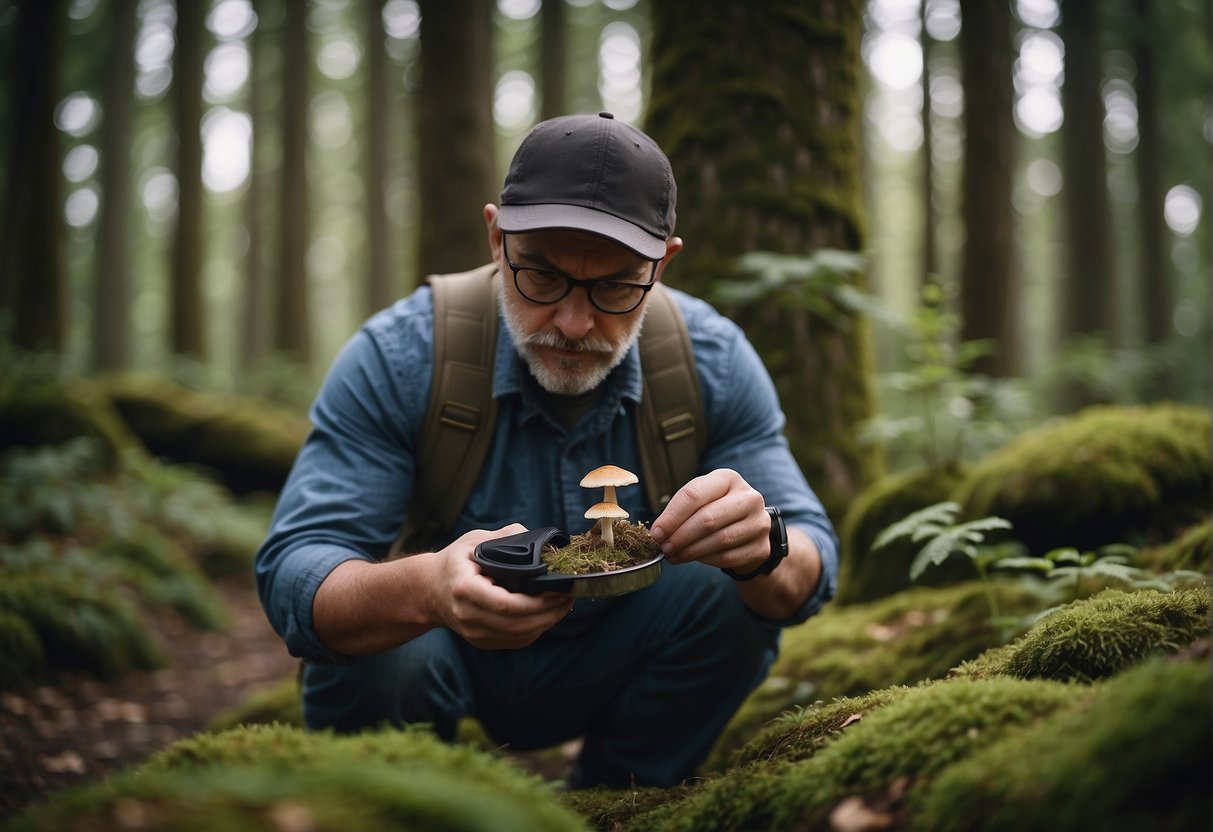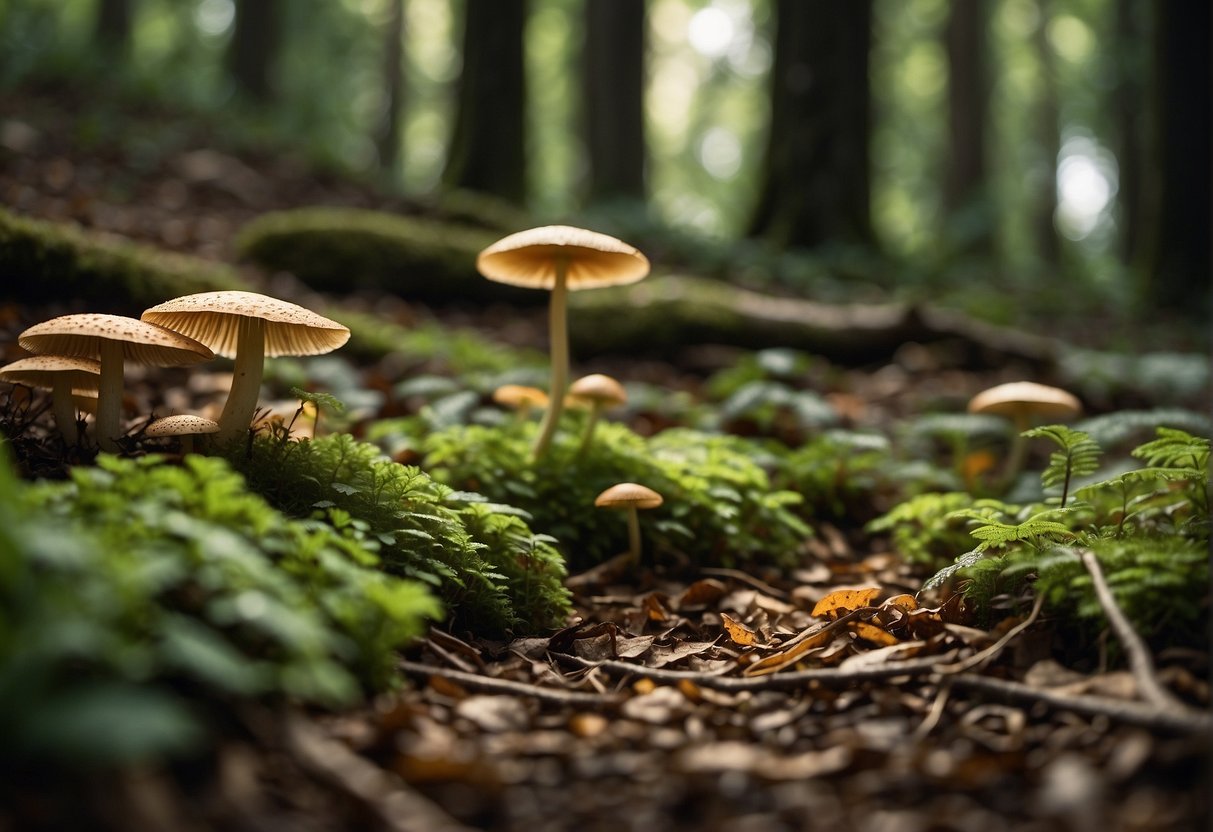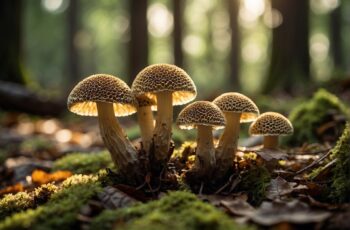Wild mushrooms offer a rich bounty for those who know how to identify them, adding both flavor and nutrition to the forager’s table. However, with great reward comes great risk; many edible mushrooms have toxic look-alikes. Your ability to distinguish between the beneficial and the deadly is critical. A solid foundation in mushroom identification is not just a matter of culinary interest, but one of safety.

Understanding the essentials of mushroom identification can transform your foraging excursions. You’ll learn to observe the subtle differences in cap shapes, stem textures, colors, and even the habitat where they grow. Equipped with knowledge and a careful eye, you can begin to unlock the secrets of the forest floor. This isn’t just a skill—it’s a way to connect with nature, to become attuned to the environment and its seasonal shifts that influence fungal growth.
Key Takeaways
- Accurate identification is critical for safe mushroom foraging.
- Knowledge of mushroom characteristics and growth patterns is essential.
- Awareness of seasonal and environmental influences aids in finding edible mushrooms.
Essentials of Mushroom Identification
When foraging for wild mushrooms, accurate identification is crucial for your safety. This section breaks down the essentials to help you distinguish between friendly fungi and potential dangers.
Understanding Mushroom Anatomy
Cap: This is the top part of the mushroom. It can vary wildly in shape; from flat to conical, color, and size. The surface may be smooth, rough, or wrinkled.
Gills/Teeth/Pores: Located beneath the cap, gills are the thin, paper-like structures. Some species may exhibit pores or teeth instead of gills, which will influence how you identify them.
Stem (Stipe): It extends from the ground up to support the cap, and variations in its length, thickness, and color can be significant in identification.
Key Identification Techniques
Spore Print: Taking a spore print is a key technique. You’ll place the cap gill-side down on paper and wait for spores to drop. Analyzing the spore color can differentiate species with similar appearances.
Cap Shape Examination: The shape of a mushroom’s cap can tell you a lot. Whether it’s bell-shaped, conical, or flat, each form can hint towards a different genus or species.
Utilizing Identification Tools
Field Guides: Equip yourself with a reliable field guide that includes clear descriptions and images. It should highlight identifying features such as gills, cap shape, and spore color.
Apps and Online Resources: Many online resources are available at your fingertips. For instance, a beginner’s guide to identifying edible wild mushrooms provides you with basic knowledge on identification techniques which can be helpful when you’re out in the wild.
Remember, when it comes to mushrooms, if you’re in doubt, leave it out. The natural world is full of wonders, but also dangers – so always proceed with caution and respect.
Foraging Safely and Responsibly
When you’re out foraging for wild mushrooms, your safety hinges on your ability to distinguish between edible and potentially toxic varieties. It’s crucial to approach mushroom foraging with a strong sense of responsibility towards the environment and adherence to local laws.
Avoiding Poisonous Varieties
- Educate Yourself: Before you head out, learn about the local mushroom species. Familiarize yourself with the hallmarks of both edible mushrooms and poisonous mushrooms to avoid the serious risk of mushroom poisoning.
- _Use Reliable Resources: Consult guides on identifying edible wild mushrooms and cross-reference your finds with multiple resources to ensure accuracy.
Ethical Foraging Practices
- Harvest Judiciously: Be mindful not to overharvest. Taking only what you need allows mushroom populations to regenerate, ensuring that they continue to flourish for future foragers.
- _Respect Nature: Tread lightly and cause minimal disturbance to the habitat. Remember, you are a visitor in the homes of countless wildlife species.
Legal Considerations
- Know the Law: Always check whether you need a permit to forage in your selected area. Some regions require you to be a licensed wild mushroom harvester to sell what you have collected.
- _Property Rights: Respect private properties and protected areas. Foraging without permission can lead to legal repercussions and hefty fines.
Recognizing Popular Edible Wild Mushrooms
Before venturing into the woods, you’ll need to know how to spot the valuable finds. The mushrooms we’ll cover not only offer rich flavors but are also distinctive, reducing the risk of a dangerous mistake.
Chanterelles and Morels
Chanterelles are like the gold rush of the fungi world with their bright yellow to orange color and vase-shaped bodies. They are known for their fruity aroma, resembling apricots, and their ruffled edges. When you locate them in mossy forests, make sure they have that signature, well-defined forked gills running down the stem for a proper identification.
Morels are another springtime favorite, easily spotted by their unique spongy appearance. These mushrooms have a honeycomb surface and range from tan to dark brown. True morels will have a hollow stem when cut lengthwise, a key feature to ensure you’re not picking the toxic false morels.
Oyster and Bolete Mushrooms
Oyster mushrooms flourish on the sides of trees, their clusters resembling a shelf of oyster shells. Look for their broad caps and subtle shades of gray or brown. They have a delicate anise-like flavor and must have gills running all the way down the stem to be true oysters.
Bolete mushrooms, like the esteemed Porcini, are what you might call the meat of the forest. What makes boletes special is the layer of spongy pores under their cap instead of gills. With their stout stems and rich, earthy taste, they’re a find that’ll make any woodland excursion memorable.
Unusual Edibles: Truffles and Hedgehogs
Truffles are underground treasures that require a bit of a hunt. They’re not what you’d typically think of when it comes to mushrooms with their warty, rough exterior. Found beneath the soil by the keen nose of trained dogs or pigs, they’re renowned for their pungent and unique flavor that elevates any dish.
Hedgehog mushrooms or “sweet tooth” have spiky, tooth-like structures underneath their cap instead of gills, which make for easy verification. They exude a mild, sweet flavor that can add a quirky twist to your traditional mushroom recipes. Their friendly appearance makes them unmistakable among the foliage.
Remember, every edible wild mushroom is a delicacy worth the hunt, but always exercise caution and confirm your finds with credible resources or a knowledgeable forager. Happy mushroom hunting!
Seasonal and Environmental Factors

When you’re out in the wild looking for mushrooms, weather patterns and the natural environment have a significant role in determining what you might find. Success hinges on your understanding of these factors and how they influence mushroom growth.
Influences of Climate and Weather
- Temperature: Mushrooms thrive in specific temperature ranges. Many species prefer the cooler temperatures of spring and fall, while others might emerge during the warmer or wetter parts of summer. Your timing is crucial; after a warm rain followed by cooler weather is often perfect for mushroom emergence.
- Light: While they do not photosynthesize, mushrooms still need ambient light to trigger certain growth phases, especially when it comes to fruiting bodies.
Habitat and Soil Conditions
- Habitat: The types of trees and vegetation around you are huge clues. For example, morel mushrooms are often found in elm, ash, or apple tree environments, especially if the trees are decaying.
- Soil Conditions: Soil rich in organic matter is often a haven for the mycelium from which mushrooms spring. The pH level and moisture content of the soil are also key—acidic soils can be productive for certain species, so keep an eye out for areas with pine needles or oak leaves which contribute to such conditions.


